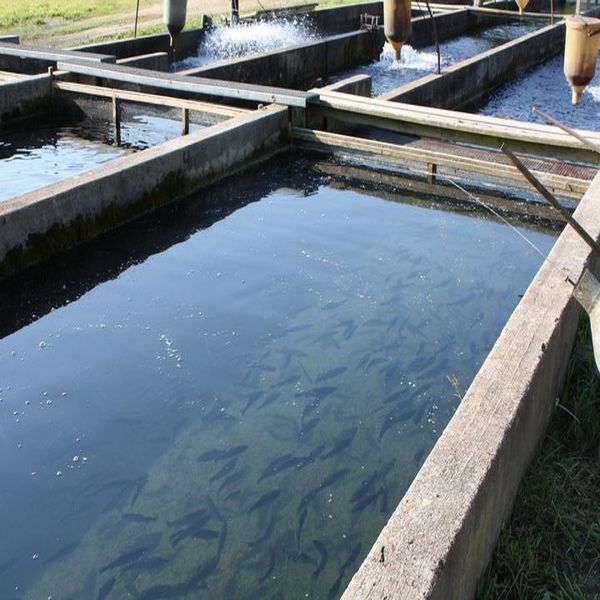As we all know, China is the world’s largest fishery producer. In 2014, China’s total output of aquatic products reached 64.651 million tons, of which aquaculture output reached 47.481 million tons. The aquaculture industry is the pillar of China’s fishery. However, with the cultivation of “four modernizations” The aggravation of the phenomenon and the huge losses caused by aquatic diseases every year are also miserable for those engaged in aquaculture, which greatly affects the aquaculture farmers’ confidence in aquaculture. Bacterial diseases are the most common cold killers in aquatic diseases.Whether it is the third disease or bleeding disease in the four major fish farming, or the red leg disease and bacteremia in shrimp farming, bacterial diseases are harmful. The entire aquaculture industry. In this case, antibiotics came into being and became a life-saving straw for the treatment of bacterial diseases. However, with the overuse of antibiotics in aquaculture, people have discovered a series of side effects caused by the use of antibiotics, which has led to the intensification of the safety and quality of aquatic products. The discovery and application of probiotics has brought new hope to people.
Probiotics are a type of live bacterial preparations and microbial fermentation products made from normal beneficial bacteria isolated from the host.The beneficial bacteria that are widely used in aquaculture are: bacillus, photosynthetic bacteria, lactic acid bacteria, nitrifying bacteria and yeast bacteria. Probiotics are favored by the majority of aquaculture farmers because they do not produce toxic and side effects like antibiotics.In aquaculture, they mainly reduce organic matter, decompose and transform harmful substances, balance the water microecology, and inhibit the reproduction and enhancement of harmful bacteria. Farming animal immunity, maintaining algal phase balance and other functions, “low-yield cultivation of algae, high-yield cultivation of bacteria” also comes from this, showing the effect of probiotics on aquaculture. However, in the actual aquaculture production process, many farmers cannot use all kinds of probiotics reasonably, but they are general types of bacteria, and they cannot distinguish the characteristics and mechanism of action of various probiotics, so that probiotics cannot do their best. In some cases, it will cause losses due to improper use. Below we make a brief discussion on the characteristics and mechanism of Easylife-L9 Probiotic and Easypond-P3 Probiotic.
Composition
Compound probiotics,Nutrients
Function:
• Fights against harmful bacteria (Vibrio) and improves survival rates .
• Enhances production of digestive enzymes,improve feed and protein conversion effectiveness .
• Reduce feeding costs and increase growth and overhaul production.
Use Recommendation
Incubation
Step 1 : Add 10L of sterile water and mix in 100g Easylife-L9 to incubation tank.
Step 2 : Incubate for 18 to 24 hours with aeration at 26-30°.
Step 3 : Apply to aquaculture pond.
Dosage
Normally,15L per 1 HA,the dose rate and frequency of application depend on the stocking density and water quality.
Storage
Keep tightly closed to protect Easylife-L9 bags from ambient humidity and rainfall. Store indoors, in a cool, dry place. Protect from freezing.
Net:1000g
Composition
Compound Probiotics,Nutrients
Function
• Decreases hydrogen sulfide and methane gas odors .
• Reduces nitrites, nitrates and ammonia Nitrogen .
• Breaks down particulate organic matter by releasing exoenzymes.
Use Recommendation
Incubation
Step 1 : Add 10L of sterile water and mix in 100g Easypond-P3 to incubation tank.
Step 2 : Incubate for 18 to 24 hours with aeration at 26-30°.
Step 3 : Apply to aquaculture pond.
Dosage
Normally,15L per 1 HA , the dose rate and frequency of application depend on the stocking density and water quality.
Storage
Keep tightly closed to protect Easypond-P3 bags from ambient humidity and rainfall. Store indoors, in a cool,dry place.Protect from freezing.
Net:1000g
In short, the timely supplementation of suitable probiotics in water or feed can play the special effects that farmers want. On the other hand, when beneficial bacteria form a dominant population in the water, the growth and reproduction of harmful bacteria will naturally be affected. Suppression, thereby reducing the incidence of bacterial diseases and increasing the breeding efficiency of farmers, must not be supplemented or supplemented at ordinary times, and supplemented randomly when sick!
Post time: Jul-06-2020

